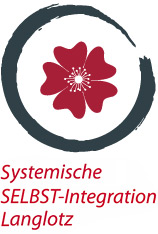Disarray in the individual as a system
In the family constellation of a traumatized family, entanglements in the family system become clear, which always lead to disarray in the individual as a system. If the family constellation is expanded by setting up a representative for the self, then these “entanglements” can be examined more closely and precisely.
Parents who are burdened by family traumas themselves tend to project their own unconscious needs onto their own child. Children quickly learn to sense the expectations of their traumatized parents and to subconsciously orientate themselves towards them. So they take on the role of a missing father (parenting) or a non-present partner (partner role). You can unconsciously be “used emotionally” and therefor “learn” to orientate yourself more towards other people’s expectations and convictions than your own. With their perception they are more outside, are “outside-oriented”, which affects their ability to delimit themselves and to feel their own needs, i.e. to be connected to their “self”. The lack of demarcation makes it difficult to connect with oneself – and vice versa. A vicious circle…
For a self-determined life, however, the distinction between what is one’s own and what is foreign, and thus the demarcation, is decisive. Only when your own inner space is created in this way, connection with your own needs and feelings (with the self) is possible, and thus orientation and self-regulation.
In addition to the – very widespread – early experience of emotional abuse, the experience of physical violence or the early loss of a close relative can severely disrupt the development of the ability to demarcate yourself. This leads to typical changes in the “system of the individual”, which also shape all subsequent relationships.
If the boundaries and space are impaired by early trauma, then those affected tend
- to orientate oneself more towards the needs and convictions of others – instead of towards oneself
- rather to split off own self-parts – than foreign ones
- to direct one’s own aggression destructively against oneself – instead of using it in a “healthy” way to defend oneself against others, in order to demarcate oneself
These aspects can be described as a symbiotic pattern. It was acquired through early conditioning. This pattern shapes all relationships. This pattern is responsible for increased sensitivity and vulnerability, for stress, for exhaustion, for burnout and the resulting psychosomatic disorders.
Furthermore, this pattern is the central cause of relationship disorders (dependency / codependency), and mood disorders and “mental illnesses” (e.g. depression, eating disorders and psychoses).
For the solution of the symbiosis pattern, the delimitation and integration of the previously split off self is crucial. This expansion turns the family constellation into a deep and fast-acting systemic family therapy, which can also be used very well in individual sessions: family therapy without the family.
Continue to Systemic Self-Integration >>
